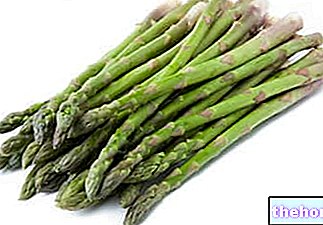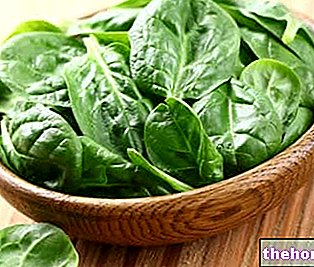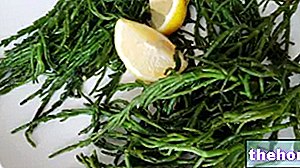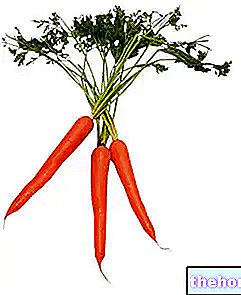Generality
The courgette (or courgette) is the immature fruit of a vegetable belonging to the Curcubitaceae family, Genus Curcubita, Species pepo; the binomial nomenclature of the zucchini plant is Cucurbita pepo.

The zucchini flowers are yellow, tending to orange, with a single petal; the male ones branch off from the stem through a thin stem, while the female ones rise from the extremity of the fruit.
Zucchini are harvested unripe, when they are about 20 centimeters long, preventing them from growing and ripening to become a pumpkin.
Nutritional Properties and Gastronomy
Let's start by specifying that, being very delicate, courgettes do not keep for long; in particular, if exposed to light and heat, they tend to lose their original freshness and nutritional properties in a few days.
Among all vegetables, courgette is one of the least caloric (thanks to its high water content) and this makes it extremely useful in different types of diets (clinical or not). The energy of the zucchini basically comes from carbohydrates and only to a lesser extent from proteins (with a low biological value, with limiting amino acid threonine) and from lipids (unsaturated type); cholesterol is absent.
The content in dietary fiber does not disappoint even if, among vegetables, it is certainly not the highest: compared to a vegetable rich in this nutritional component, such as artichoke (5.5g / 100g), courgettes provide about 4 or 5 times LESS. Obviously, if on the one hand they contain less fiber (very important for intestinal balance, the prevention of certain tumors and the modulation of nutrient absorption), courgettes are considered among the MOST DIGESTIBLE vegetables of the entire category.

Nutritional values (per 100 g of edible portion)
As far as the vitamin aspect is concerned, courgettes bring above all a modest contribution of vitamin C, equivalent retinol (vitamin A) and folic acid (not visible in the table).
From a saline point of view, on the other hand, courgettes abound above all in potassium and manganese (not visible in the table).
Zucchini are suitable for any diet and help to increase the intake of water, potassium and fiber in the diet. They have a satiating effect and are perfect in the context of a low-calorie diet and / or against metabolic diseases. The average portion of courgettes (cooked simply, boiled or sautéed with a drizzle of oil) is about 150-250g, even twice a day.
Unlike pumpkin (obsolete in many regions of Italy), courgettes are a very common food in the tables of the whole nation. Steamed or boiled, sautéed and served with a drizzle of oil and vinegar, they are considered by all a tasty and dietetic vegetable. Other times they are used as an ingredient in minestrone, soups, mixed salads or vegetable salads, with or without legumes. There is no shortage of first courses (dry pasta or risotto) accompanied by sauces with zucchini, while the most greedy people tend to cook them with oil and butter or fry them after having floured them. Obviously, raw food fanatics use them without cooking them, in the form of julienne, perhaps inside mixed salads enriched with oil seeds (sesame, poppy, sunflower, almonds, pine nuts, hazelnuts, etc.) and other raw vegetables.
Zucchini-based desserts have even been proposed, such as the vegan cake with cocoa, hazelnuts and courgettes.
Video Recipes with Zucchini



















-nelle-carni-di-maiale.jpg)








